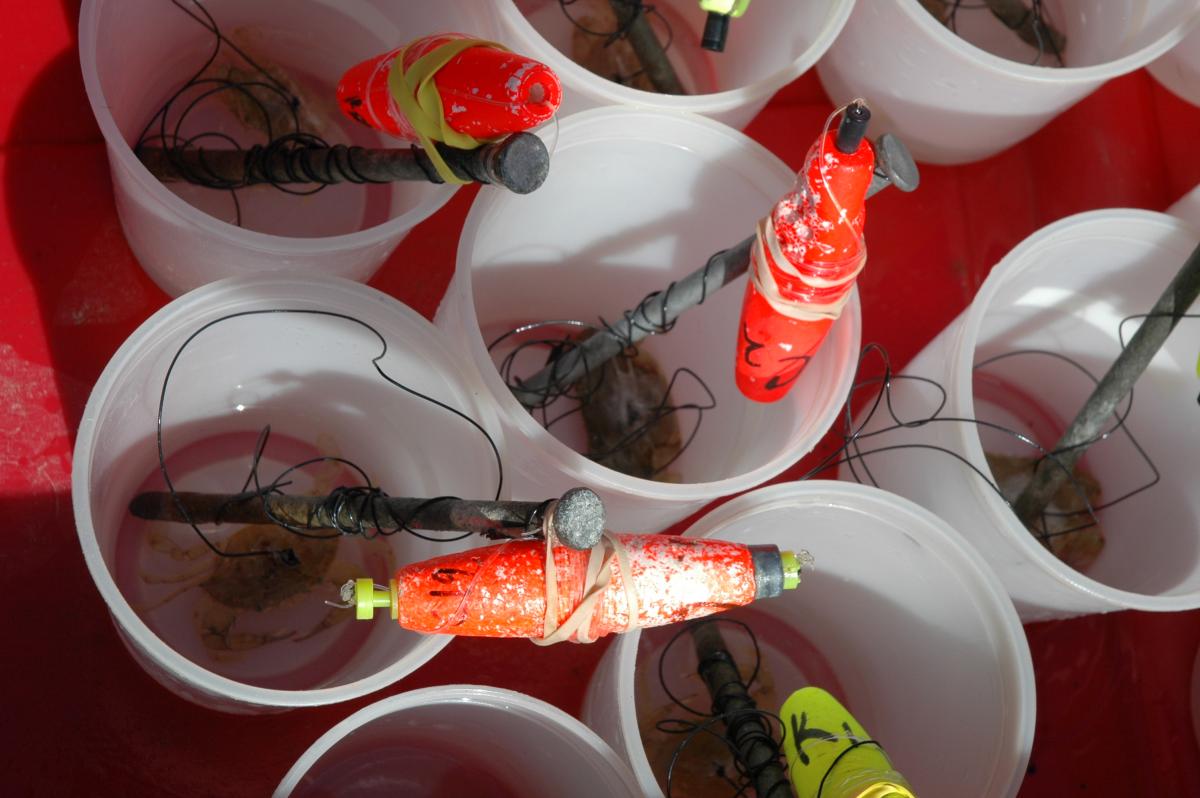- Home
- Research
- Projects
- Predation experiments
- Predation experiments
Predation experiments
Project Goal
The goal of this project is to better understand the predator-prey interactions in shallow nearshore habitats of the Rhode River.

Predation in the Nearshore Zone
Nearshore areas provide refuge, food, and nursery grounds for small fish and crustaceans. However, these areas can also have many predators such as blue crabs, fish, and wading birds. Small fish and crustaceans are important forage (prey) for the larger individuals that prey on them.
Our lab has been studying these predator-prey interactions in a representative location of nearshore habitat, Canning House Bay, in the Rhode River using the experimental technique of tethering since 1989. The data collected helps us to determine who the important predators are and how the risk of predation changes from year to year.
Our study species are: Mummichogs (Fundulus heteroclitus) and juvenile blue crabs (Callinectes sapidus). We also collaborate on a study of grass shrimp (Palaemonetes pugio) predation with the Marine Invasion Ecology Lab.
Though there are many different kinds of juvenile and small fish that can be found in the nearshore area, we use mummichogs as a representative species. Mummichogs are a smaller fish that are abundant and hearty, making them a good species to use in our tethering study.
Juvenile blue crabs are most abundant in nursery habitats in Chesapeake Bay tributaries such as the Rhode River. These nursery areas are full of the clams, fish, worms, and small crustaceans that juveniles crabs like to eat.
Tethering
Our tethering studies are conducted over three days/month every June, July, and August. Tethering involves securing a small fish or juvenile crab (30-70 mm carapace) to a piece of vinyl coated wire that is attached to a 6" nail spike and a float. At a water depth of 40 cm, the spike is pushed into the bottom sediment and left to sit. After specific intervals, we use each tether's marker float to pull up the crab or fish to see the status of the individual. Fish are checked after two 15-minute periods and then after 30-minutes periods until they are gone. Crabs are checked after 24 hours.
The small fish are also fashioned with a small hook dangling from a monofilament loop that is wrapped around the lower jaw, in order to attempt to catch whatever predator decides to eat the small fish -- similar to angling! This helps us learn more about what species of predator are in the area and how predation rates vary annually.
What does this data tell us?
These experiments give us some insight into the foraging behavior of predators that eat small fish and crustaceans in the nearshore area. It also gives us an idea of of what sort of predation pressure exists at these locations and what predators are there.
What have we found?
The primary predators of juvenile blue crabs in the Rhode River are adult blue crabs. As juvenile crabs increase in size, they are less likely to be eaten. The likelihood that juveniles will be eaten increases in years when the population of adult blue crabs is large. This very important finding is the result of our studying predation of juvenile blue crabs over the long term. We are able to compare our results with adult crab abundance data from the 25-year Bay-wide Blue Crab Winter Dredge Survey (WDS) conducted by Maryland Department of Natural Resources and the Virginia Institute of Marine Science.
